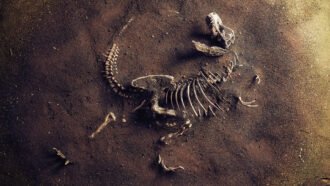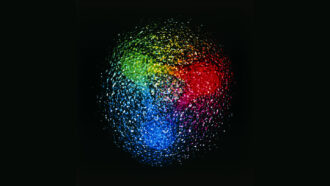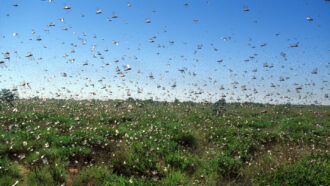Physics

Educators and Parents, Sign Up for The Cheat Sheet
Weekly updates to help you use Science News Explores in the learning environment
Thank you for signing up!
There was a problem signing you up.
-
 Physics
PhysicsScientists Say: Fission
Nuclear fission is the process of splitting atoms apart to release huge amounts of energy.
-
 Animals
AnimalsTiny bumps on polar bear paws help them get traction on snow
Super-small structures on the Arctic animals’ paws might offer extra friction that keeps them from slipping on snow, a new study concludes.
By Meghan Rosen -
 Physics
PhysicsExplainer: What is friction?
The force of friction always acts to slow things down. It depends on just two factors: the surfaces and how hard they press together.
By Trisha Muro -
 Physics
PhysicsExplainer: Radiation and radioactive decay
Like clockwork, radioactive forms of some elements shed parts of themselves as they attempt to become nonradioactive.
By Janet Raloff and Trisha Muro -
 Physics
PhysicsExplainer: Radioactive dating helps solve mysteries
Knowing the decay rate of radioactive elements can help date ancient fossils and other artifacts.
By Trisha Muro -
 Earth
EarthFossil-fuel use is confusing some carbon-dating measurements
Carbon-14 dating of recent artifacts will soon give scientists confusing results. That’s another price society pays for its reliance on fossil fuels.
By Trisha Muro -
 Plants
PlantsWhy dandelions are so good at widely spreading their seeds
Individual seeds on a dandelion release most easily in response to winds from a specific direction. As the wind shifts, this scatters the seeds widely.
-
 Tech
TechA tool as small as a human cell can scan for contaminants and more
Tiny spectrometers might someday show up on smart devices. They could help people scan for ingredients or contaminants in foods and other materials.
-
 Chemistry
ChemistryScientists Say: Fluorescence
This property causes materials — including some animals’ skin, fur or feathers — to glow under light.
-
 Physics
PhysicsProtons may be stretchier than physicists had thought
Physicists looked at how the quarks that make up protons move in response to electric fields. And they found more movement than expected.
-
 Animals
AnimalsInsect swarms might electrify the air as much as storm clouds do
Honeybees that flew over a voltage sensor sparked a new look at the effect of insects on electricity in the atmosphere.
-
 Chemistry
ChemistryExplainer: What is a hydrogel?
These unusual materials have a host of unusual properties. You can even make a starch-infused version in your kitchen.